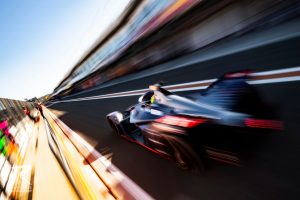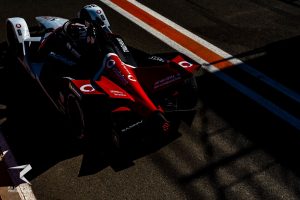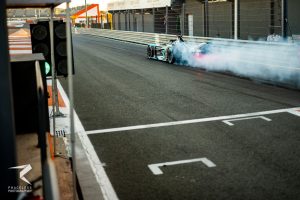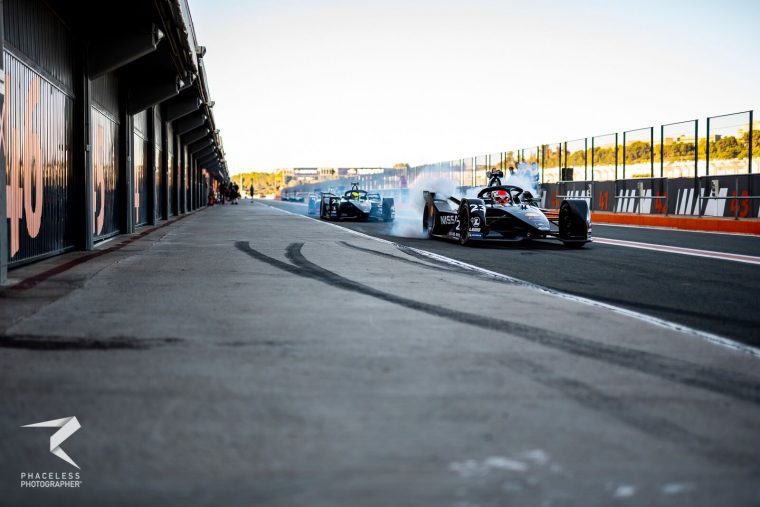Formula E in Season Six – what’s changed?
The reveals are finished. The drivers are set in stone. The teams have evolved. Pre-season testing is underway at Circuit Ricardo Tormo, Valencia, and with it the wheels of Season Six are finally spinning in anger. And as the new season’s fire is stoked, here’s everything you need to know about what’s changed in Formula E.
The Rules
Formula E’s opting to tweak the rulebook in Season Six, rather than revolutionise. The Gen2 cars introduced just a year ago are still here and present, but one trick exploited under the Season Five won’t be – the dual motors. Since the decision to open powertrain development in 2015, teams such as Nissan and NIO have deployed the idea, but all teams have agreed to use single motors onwards for cost reasons.
 Attack Mode, another Season Five debutant which allows for a temporary speed boost after crossing a sensor-embedded section of an E-Prix circuit, has seen some changes too. While the number, duration and minimum amount of usage are still decided one hour before an E-Prix to shake up strategic planning, the power increase Attack Mode offers has jumped from an extra 25kW to 35kW, while the spate of Full Course Yellow/Safety Car activations, a theme of Season Five racing, have been outlawed to prevent drivers from taking advantage.
Attack Mode, another Season Five debutant which allows for a temporary speed boost after crossing a sensor-embedded section of an E-Prix circuit, has seen some changes too. While the number, duration and minimum amount of usage are still decided one hour before an E-Prix to shake up strategic planning, the power increase Attack Mode offers has jumped from an extra 25kW to 35kW, while the spate of Full Course Yellow/Safety Car activations, a theme of Season Five racing, have been outlawed to prevent drivers from taking advantage.
Also related to those conditions is a new rule designed to balance out the advantage they offer to drivers looking to energy-save – for each minute spent under a FCY or Safety Car, 1kWh of energy will be subtracted from the total amount of energy available, measured from the moment an E-Prix is neutralised, to combat the benefit its previously offered to drivers and teams.
The length of time for an E-Prix to take place in has stayed the same (45 minutes + 1 lap), but for the new season the countdown clock will stop if the race is temporarily suspended – remaining at the discretion of the FIA Race Director – in an attempt to ensure all races reach the maximum time limit.
A change has been made to the point-scoring system to the series for Season Six also, with a championship point being awarded to every driver fastest in their qualifying group as well as the returning three points awarded to the driver who takes pole position in the Superpole shootout and point awarded for fastest lap in the E-Prix.
The Calendar
New arrivals, hiatuses, possible permanent departures and format changes – Season Six’s calendar has it all. First, the new venues: Seoul and Jakarta, of South Korea and Indonesia respectively, will be hosting an E-Prix for the first time. Both are Far Eastern cities very much suited to the rigours of Formula E, and there’s another debutant joining them…
…the return of the London E-Prix, last seen in 2016’s Season Two finale, except the event is located at ExCel London rather than the old Battersea Circuit. Marking the season finale, London’s E-Prix will be one of two double-header races, the other being the season-opening Ad Diriyah E-Prix which is running this format for the first time.
Monaco’s E-Prix is absent due to a bi-yearly arrangement, so Season Seven will see it return for certain, unlike the other absentee tracks which have no such guarantees. Hong Kong, the Season Three season-opener, was replaced late on by the returning Sanya, while the Swiss E-Prix, which was located in Bern for a one-off race last season, is also absent. The full calendar and dates are down below.
Ad Diriyah E-Prix – 22nd to 23rd November 2019
Santiago E-Prix – 18th January 2020
Mexico City E-Prix – 15th February 2020
Marrakesh E-Prix – 29th February 2020
Sanya E-Prix – 21st March 2020
Rome E-Prix – 4th April 2020
Paris E-Prix – 18th April 2020
Seoul E-Prix – 3rd May 2020
Jakarta E-Prix – 6th June 2020
Berlin E-Prix – 21st June 2020
New York E-Prix – 11th July 2020
London E-Prix – 25th to 26th July 2020
(new E-Prix in bold, changed formats for E-Prix in italic)
The Teams
 There’s two notable changes on the team front – Porsche finally entering Formula E as the succession plan to their LMP1 efforts in WEC after their 2017 exit, and HWA Racelab, as was planned when they joined in 2018, transitioning into Mercedes.
There’s two notable changes on the team front – Porsche finally entering Formula E as the succession plan to their LMP1 efforts in WEC after their 2017 exit, and HWA Racelab, as was planned when they joined in 2018, transitioning into Mercedes.
The other teams have stayed static (besides NIO’s acquisition of title sponsor 333), but powertains haven’t. Venturi Racing has switched to Mercedes power after supplying HWA with their own powertrains, NIO are now using Dragon’s Season Five powertrain and Porsche are, understandably, using their own in their maiden season. Here’s every team below.
The Drivers
There’s both high-profile newcomers, absentees and driver switches for Season Six – and it’s time to go through them team-by-team.
DS Techeetah waved Andre Lotterer goodbye as he departed for a new adventure at Porsche, and in his place is BMW i Andretti’s leading Season Five star and series stalwart Antonio Felix da Costa. The 2018 Ad Diriyah race-winner will partner current title defender and two-time Drivers’ Champion Jean-Eric Vergne, who stays for a fourth season.
 Partnering Lotterer at Porsche will be series rookie Neel Jani, and the choice was of little surprise given the dynamic partnership they formed in WEC. Other rookies debuting in Season Six are Jaguar Racing’s replacement for Alex Lynn and partner to Mitch Evans, GTE-Pro regular James Calado, Mercedes’ new hire and current Formula 2 champion Nyck de Vries, and the entirety of GEOX Dragon’s lineup.
Partnering Lotterer at Porsche will be series rookie Neel Jani, and the choice was of little surprise given the dynamic partnership they formed in WEC. Other rookies debuting in Season Six are Jaguar Racing’s replacement for Alex Lynn and partner to Mitch Evans, GTE-Pro regular James Calado, Mercedes’ new hire and current Formula 2 champion Nyck de Vries, and the entirety of GEOX Dragon’s lineup.
Both Audi DTM driver Nico Muller and ex-Porsche WEC, Toro Rosso racer Brendon Hartley are taking part in Formula E for the first time, making up the most inexperienced lineup in the new season at the expense of axed Jose Maria Lopez, and Maximilian Günther… who moved to BMW in bold fashion to replace da Costa and partner sophomore challenger Alexander Sims. Finally, NIO announced just today that Ma Qing Ha has replaced Tom Dillmann to become Oliver Turvey’s new teammate.
Elsewhere, drivers have remained static in a showing of the strength that was on show in Season Five. Here are the teams and drivers in full below.
DS Techeetah – Jean-Eric Vergne and Antonio Felix da Costa
Audi Sport ABT Schaeffler – Lucas di Grassi and Daniel Abt
Envision Virgin Racing – Robin Frijns and Sam Bird
Nissan e.dams – Sebastien Buemi and Oliver Rowland
BMW i Andretti Motorsport – Alexander Sims and Maximilian Gunther
Mahindra Racing – Jerome d’Ambrosio and Pascal Wehrlein
Panasonic Jaguar Racing – Mitch Evans and James Calado
Venturi Racing – Edoardo Mortara and Felipe Massa
GEOX Dragon – Brendon Hartley and Nico Muller
NIO 333 – Oliver Turvey and Ma Qing Ha
Mercedes-Benz EQ – Stoffel Vandoorne and Nyck de Vries
TAG Heuer Porsche – Andre Lotterer and Neel Jani
(current Drivers’ and Teams’ champions in bold, past Drivers’ and Teams’ champions in italic)





 No part of this website or any of its contents may be reproduced, copied, modified, adapted, used or distributed without the prior written consent of the author. e-racing.net is not responsible for the content of external sites or links.
No part of this website or any of its contents may be reproduced, copied, modified, adapted, used or distributed without the prior written consent of the author. e-racing.net is not responsible for the content of external sites or links.